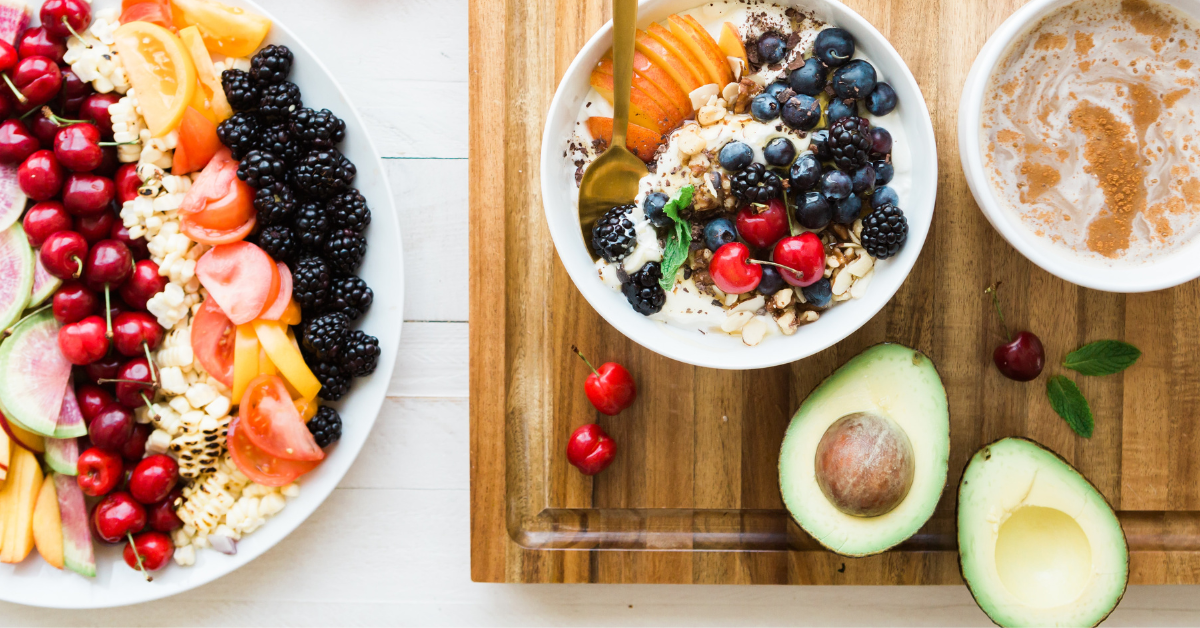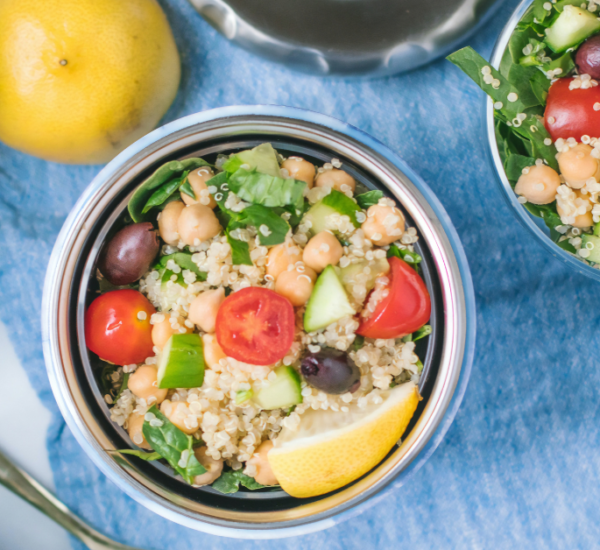With so many supermarket labels reading ‘fat-free’, ‘low-fat, ‘skim’, ‘reduced fat’ it can be difficult to know what you should be buying and whether fat is friend or foe. Word of advice – don’t be fooled by fat-free product claims. The skinny on fat is that we need to eat moderate amounts of healthy fats every day.
In the 1980s and 1990s, consumers observed a big change in the products lining their supermarket shelves. From every corner of every shelf, food labels claiming to be ‘fat-free’ or ‘low-fat’ sang out. People started to believe that by ditching fat, they too would become ‘low-fat’ and lean.
In theory, eating ‘low fat’ absolutely makes sense. Fat contains double the amount of calories per gram (nine calories per gram) as carbohydrates and protein (each four calories per gram). Low-fat eating became a dieter’s dream and consumers chowed down on anything low-fat; including low-fat ice-cream, confectionary, bread and pasta. Somehow the message ‘you-are-what-you-eat’ became completely warped and sadly fat was often replaced with sugar, a ‘fat-free’ flavour booster. As low-fat options boomed, so did obesity rates.
Low-Fat Food Doesn’t Mean Low Fat Physique
Clearly, low-fat foods and diets do not deliver low fat physiques. Whether it comes from protein, carbohydrate or fat itself, if we eat more fuel (energy or calories) than our body requires, it gets stored as fat – no matter what.
The problem with low-fat foods is that they are not very filling, so we can eat a lot more. Fat is satiating – it fills us up and makes food taste good. Fat also triggers production of the hormone Leptin, which turns on that “full” feeling and switches off hunger.
There is something about fat that also makes us mindful of our portions and slows us down – we know that extra fat will make a beeline to our butt or belly if we overindulge.
Swapping Low-Fat for Good Fats
The fat-free message of the 80’s and early 90’s was too simplistic; consumers overindulged and ignored healthy fats that are essential for our hearts, hormones, skin, hair and healthy cholesterol levels.
According to the Australian Dietary Guidelines, the recommended allowance for unsaturated spreads and oils per day is two serves for women and four for men (two for men over 70).
A serving is equal to:
- 10g polyunsaturated spread
- 10g monounsaturated spread
- 7g polyunsaturated oil, for example olive or canola oil
- 10g tree nuts or peanuts or nut pastes/butters
There is no doubt that eating too much fat makes weight reduction hard (although not impossible), but the best approach is to concentrate on reducing harmful fats while including healthy fats in moderation. With too little fat in the diet we risk poor vitamin absorption (especially vitamins A, E, D and K), our moods can hit swings and roundabouts, and the way our body balances out LDL and HDL cholesterol can become problematic.
Healthy Fat for a Healthy Heart
Consuming healthy fat is also surprisingly good for our hearts. Whole foods like avocado, oily fish, olive oil, nuts, seeds and olives are extremely beneficial.
The Mediterranean Diet is an excellent example of this and with countless studies identifying reduced mortality rates in these populations, health professionals cannot help but sit up and take notice.
Choosing the right kinds of fats is critically important; you don’t need to be Einstein to figure out that a chocolate bar isn’t going to be cardiac protective like salmon.
9 Healthy Fats for Every Day
Here’s some practical ways to include healthy fats into your daily diet.
- Limit your use of margarine and butter as a spread – try using a small amount of avocado, nut butter, olive oil, low-fat ricotta or even hummus.
- Use a little olive, canola or nut oil in cooking and salad dressings.
- Keep a spray can of extra virgin olive or canola oil handy so you can use a light spray, rather than an overly generous drizzle.
- When it comes to dairy products, by all means choose low-fat options. This will significantly reduce the amount of saturated fat in your diet; the bad fat that stubbornly sticks to arteries and organs. Plus, you will still have a protein and calcium rich source of dairy.
- Limit your intake of salami, sausages and other processed fatty meats and opt for lean cuts of meat; remove visible fat and skin from all meat and poultry.
- Order stir-fried, grilled, BBQ or baked foods when in restaurants rather than deep or shallow fried.
- Prepare and cook more of your own meals. That way you’re in control of the type and amount of fat you eat.
- Limit the amount of processed and packaged foods that come into your home and take note of the ingredient list, not just the calorie content and fat grams.
- Go for foods rich in polyunsaturated fats (e.g. oily fish) and monounsaturated fats (e.g. avocado and nuts) and limit your intake of saturated fat (e.g. full fat dairy and meat fat).
The Smart Consumer and a Mindful Eater
It is important not to be lured into following radical trends, like eating a fat-free diet. When you eliminate valuable macronutrients like fat, omit carbs or eat too much protein, you are at risk of health complications.
You need to be both mindful and balanced when preparing meals. Understand where your dietary fat is coming from and learn to read nutrition panels with an open mind. By all means choose low-fat products to keep calories down, but don’t forget to read the ingredient list as well. You don’t want to choose low-fat at the risk of high sugar.
Include wholefoods like oily fish, olives, avocado, nuts and seeds in your diet to ensure your intake of healthy fat. And enjoy them, because they are delicious too, and you can do so guilt free!















